Abstract
A standard hand-wash sampling technique was compared with a simple finger-streak sampling method in assessing the relative effectiveness of a number of alternative preparations used for disinfecting the surgeon's hands (alcoholic 0.5% chlorhexidine, alcoholic 0.1% tetrabrom-o-methyl phenol, a 4% chlorhexidine detergent solution, aqueous 0.5% chlorhexidine, 2% 'Irgasan' detergent solution and, as control, bar soap). There was a fairly good correlation between the results of assessment by the two methods after a single disinfection and after six disinfections, three on one day and three on the next. Significant differences were shown in 21 comparisons between treatments when the hand-wash sampling test was used, and 16 of these comparisons also showed a significant difference by the finger-streak test. Staphylococcus aureus was found in hand samplings from 5 out of 8 nurses in the Burns Unit of Birmingham Accident Hospital by the hand-wash sampling method and from 2 of the same 8 nurses by the finger-streak method; the numbers were small, and no Staph. aureus were isolated from the same hands after 1 min. wash in 70% ethyl alcohol. Similar sampling on 29 nurses in other wards showed Staph. aureus on 3 nurses (one in large numbers) by the hand-wash technique and on 1 nurse by the finger-streak test; in only 1 nurse whose hands showed Staph. aureus before disinfection was the organism found, by hand-wash sampling, after disinfection. Parallel sampling of nurses' hands after washing with soap and water and after disinfection with 95% ethanol showed larger numbers of Staph. aureus in a hospital for skin diseases than in a general hospital, and a lower incidence and somewhat lower density of Staph. aureus after ethanol treatment than after washing with soap and water; Gram-negative bacilli, on the other hand, were commoner on hands in the general than in the skin hospital, and present in much smaller numbers after disinfection with ethanol than after washing with soap and water. Antibiotic sensitivity tests showed the frequent recurrence on the hands of some nurses of multi-resistant Staph. aureus with resistance patterns similar to those found in infective lesions in some of the patients; different sensitivity patterns were usually found in staphylococci isolated from the nose. Even in wards where many patients were infected, carriage by nurses' hands of a particular strain of Staph. aureus did not seem to last for more than a few days.
Full text
PDF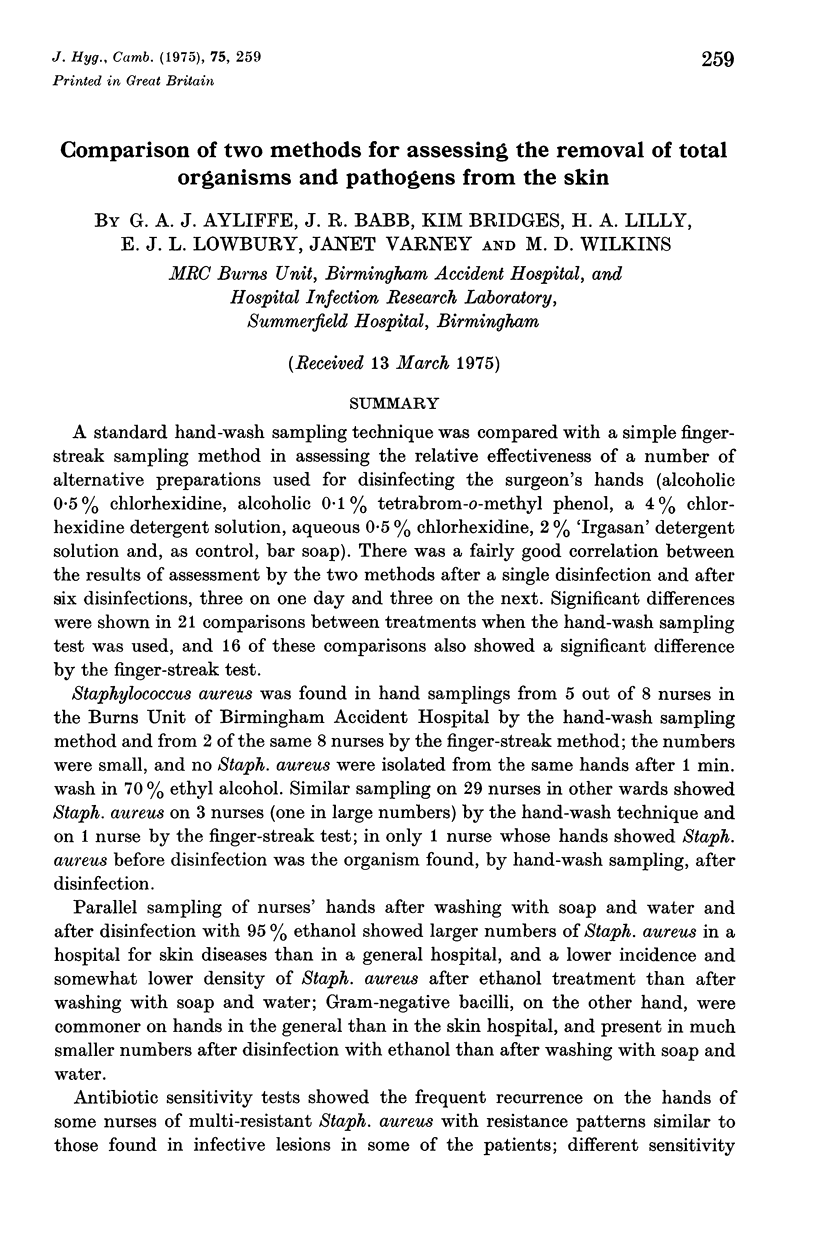
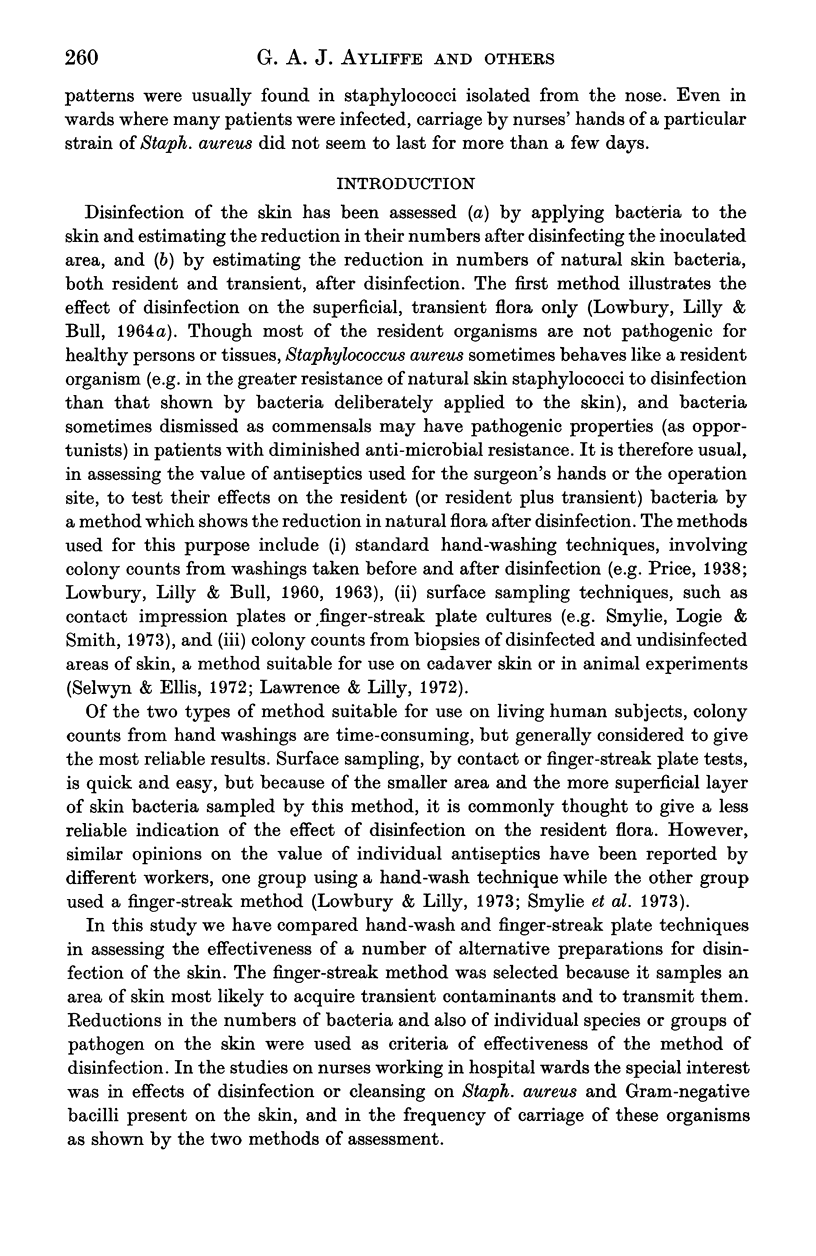
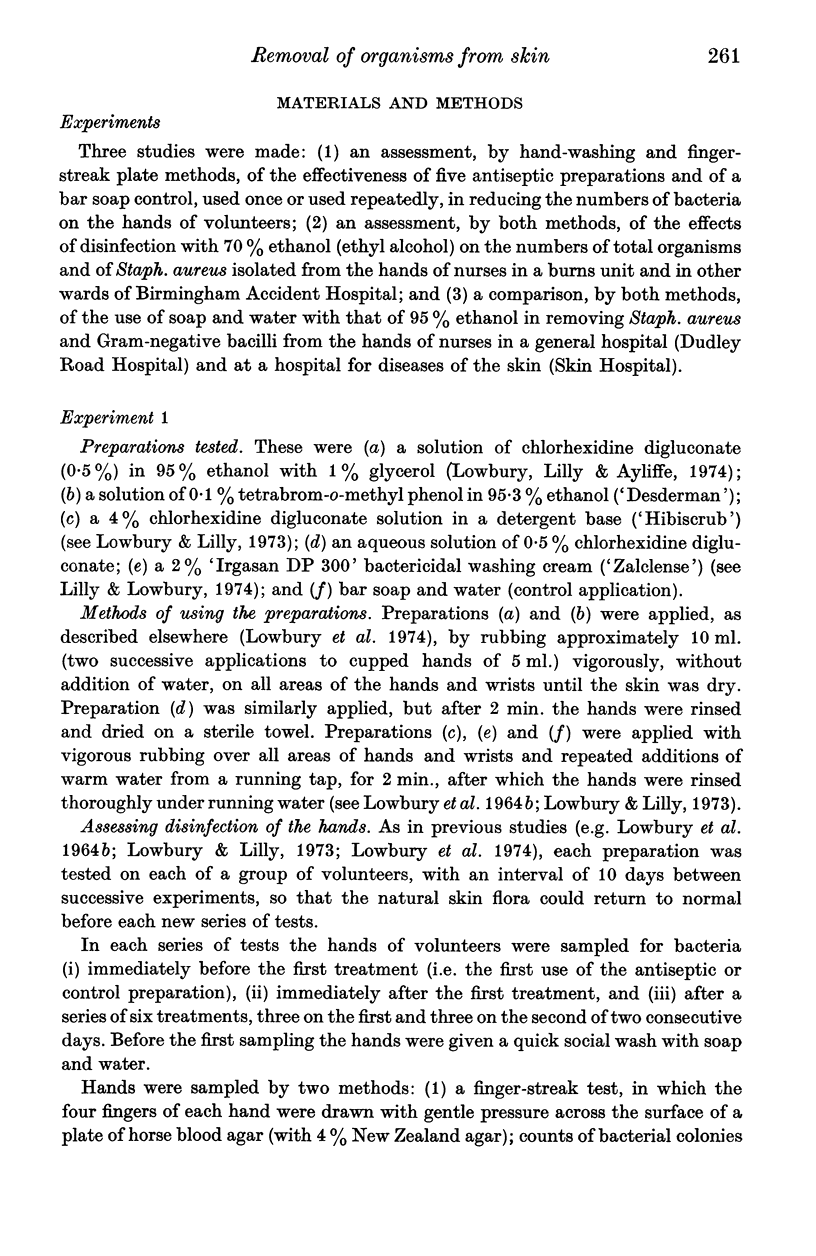
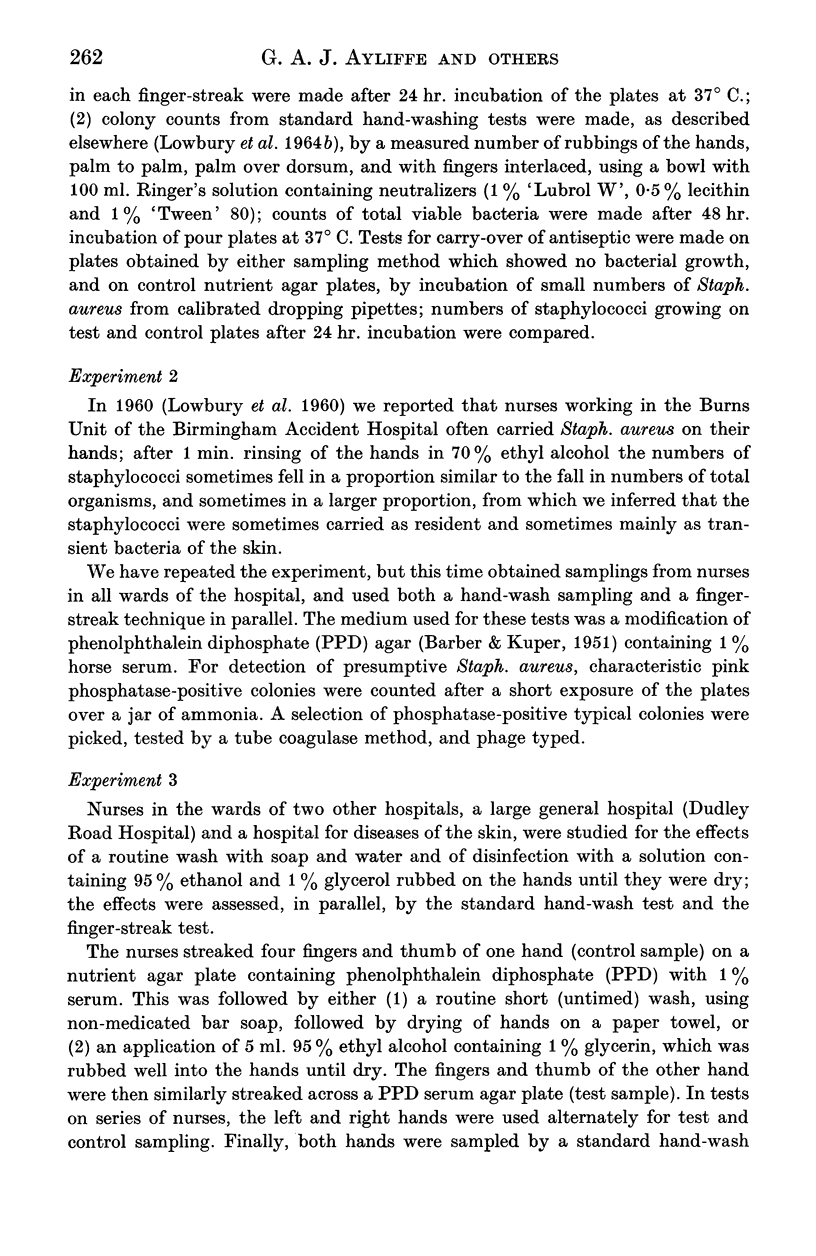
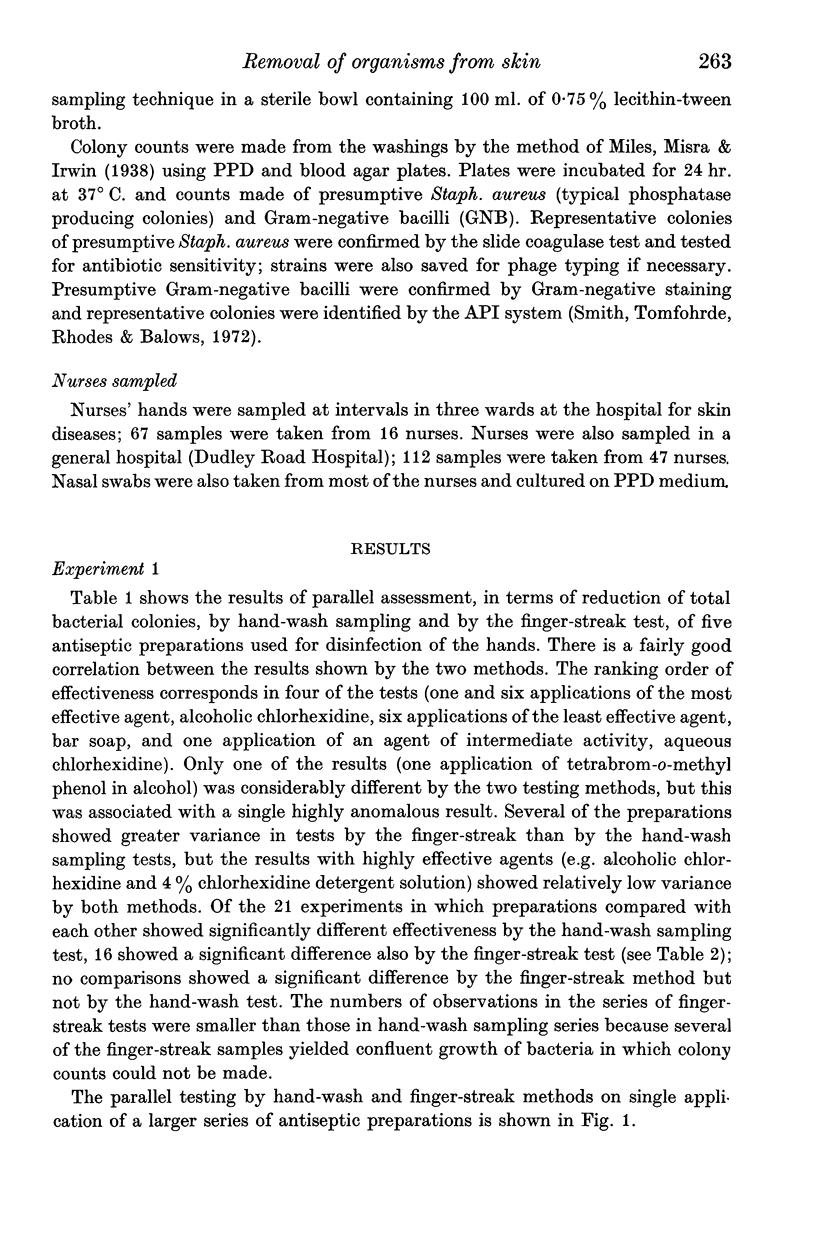
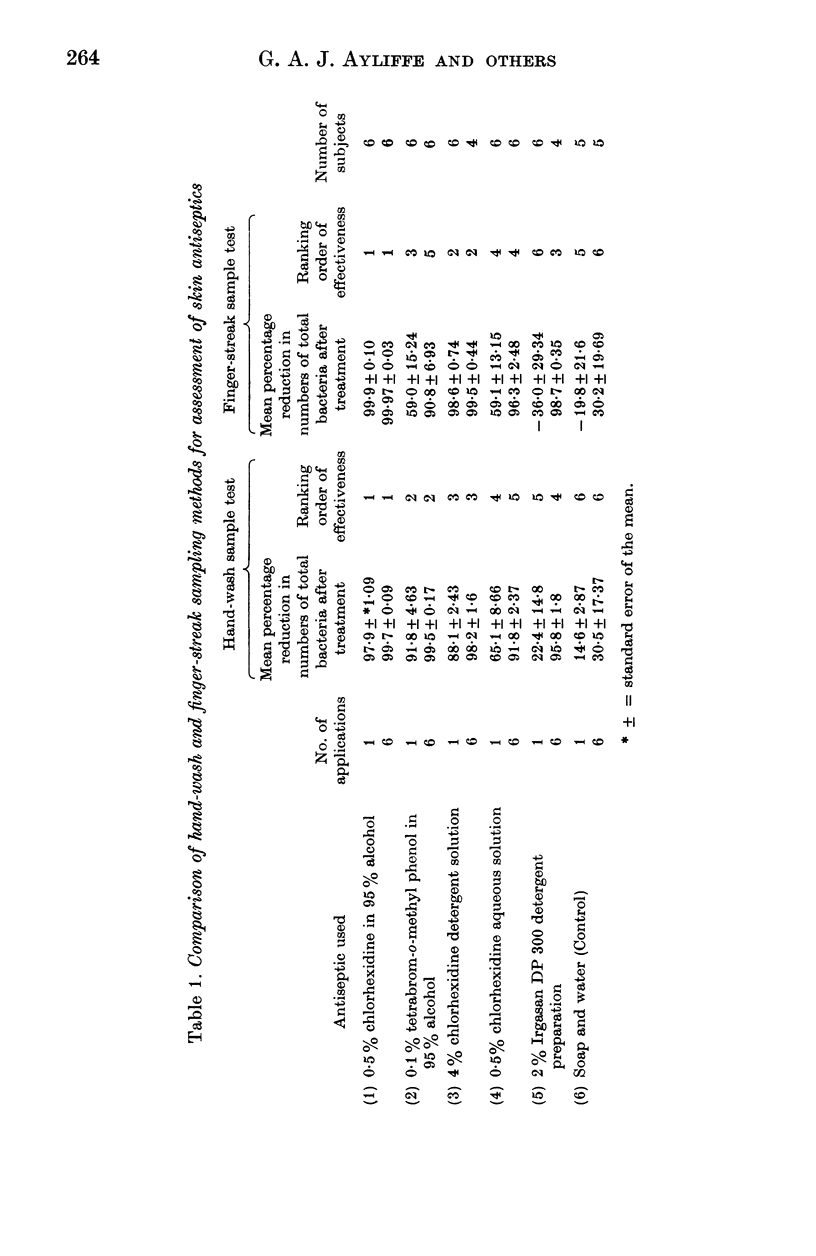
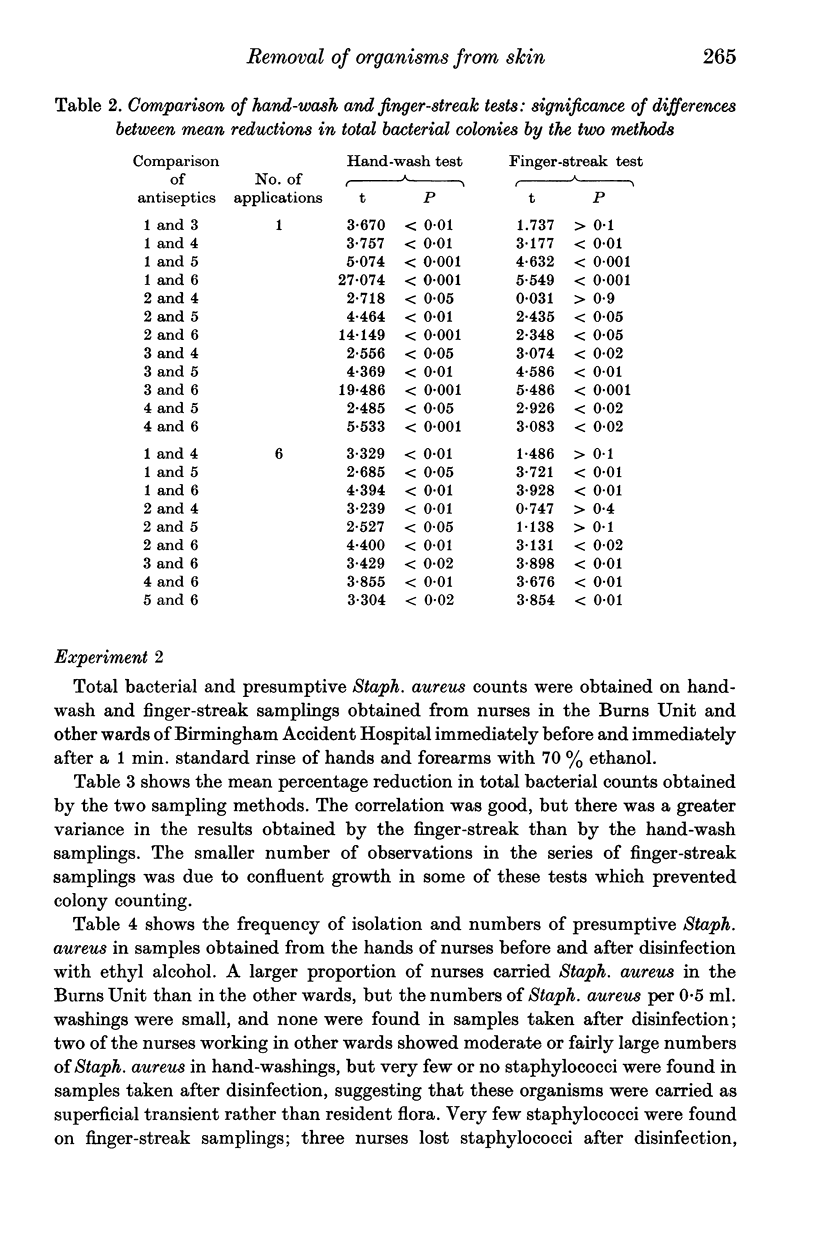
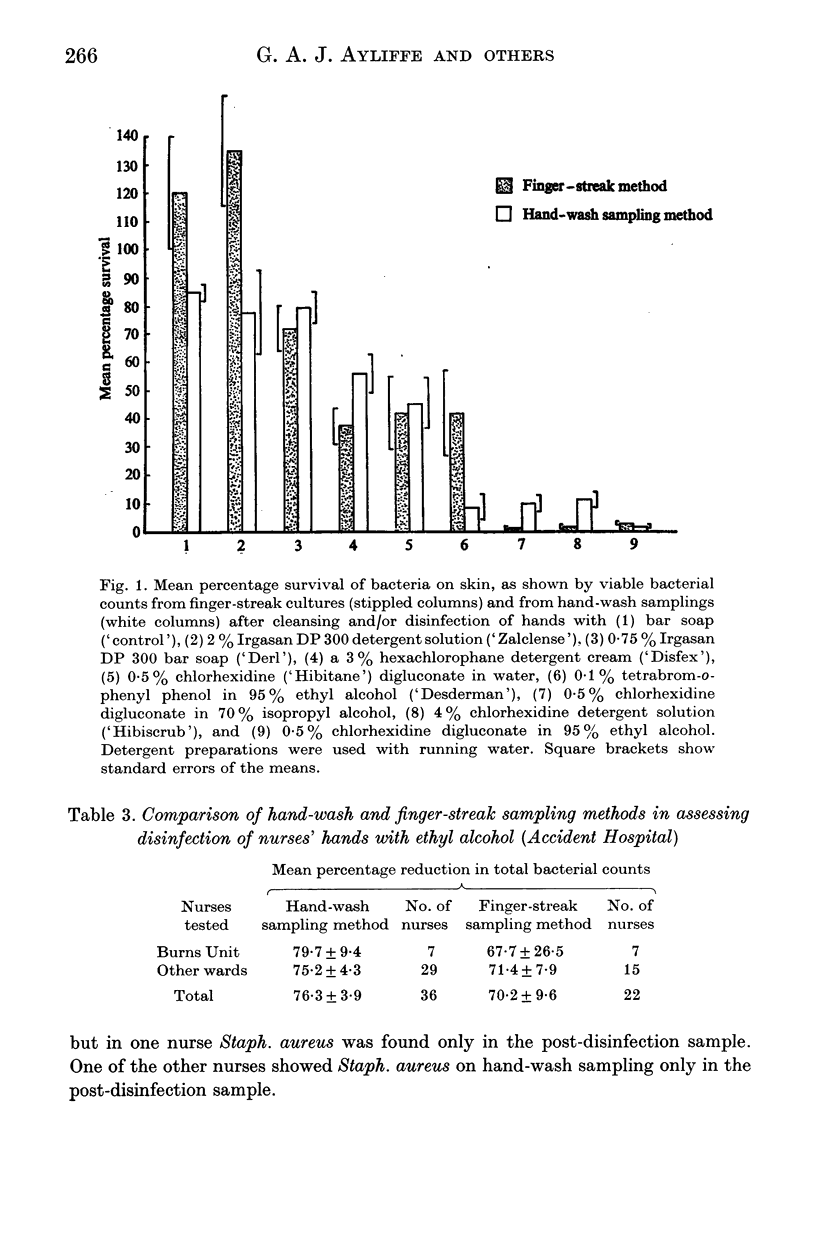
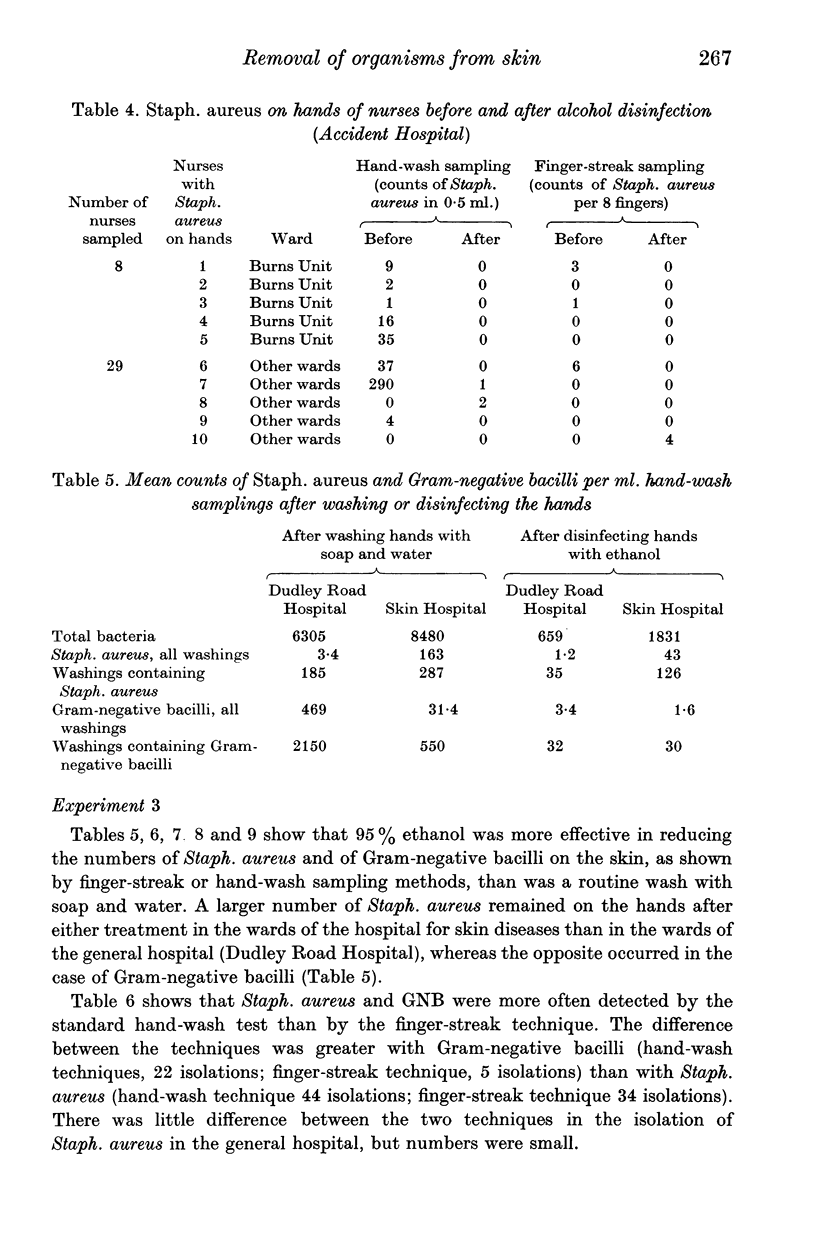
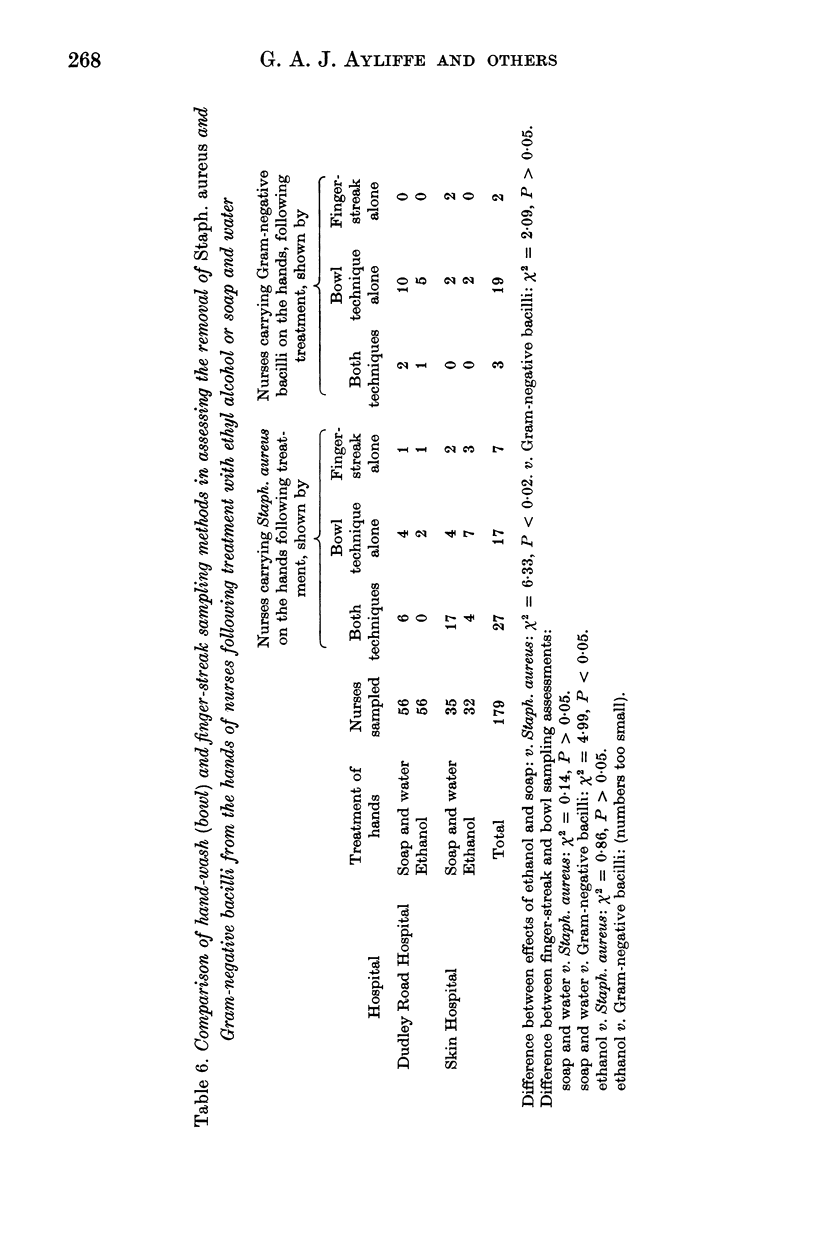
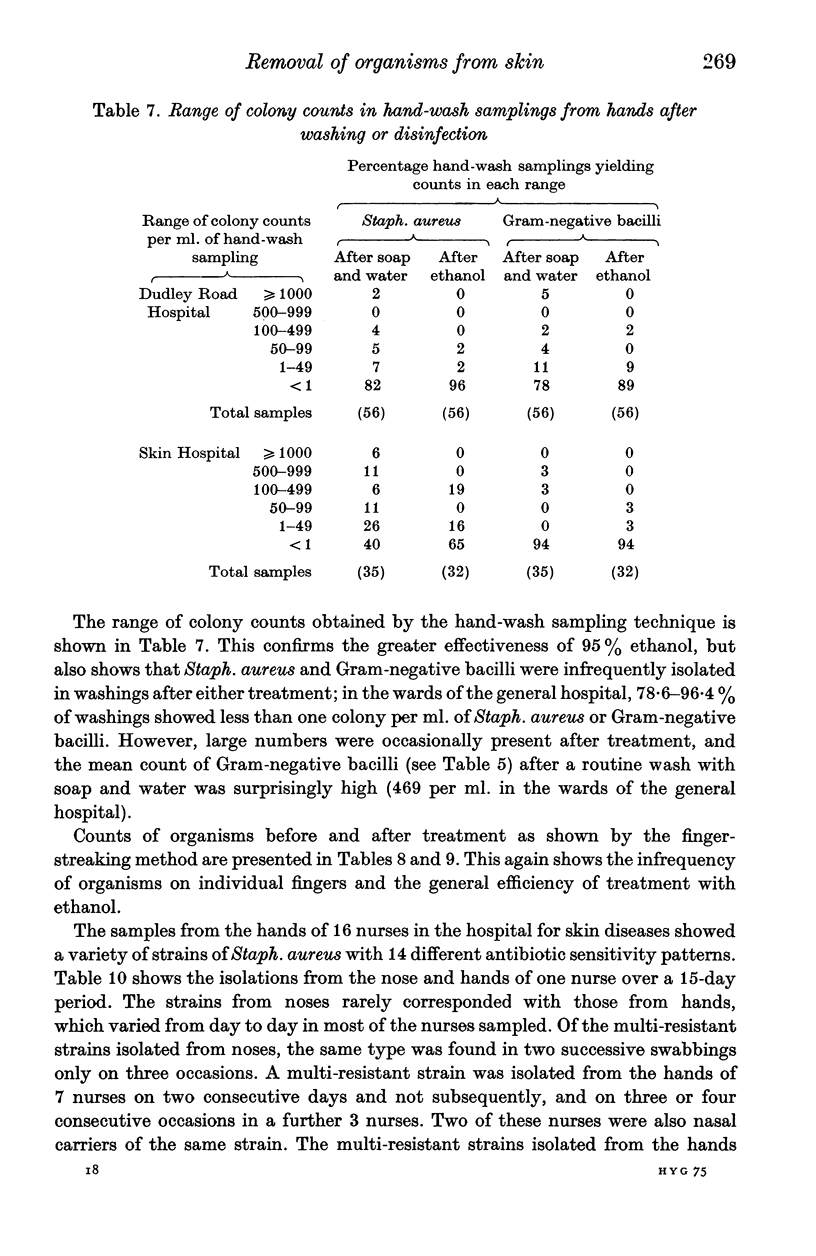
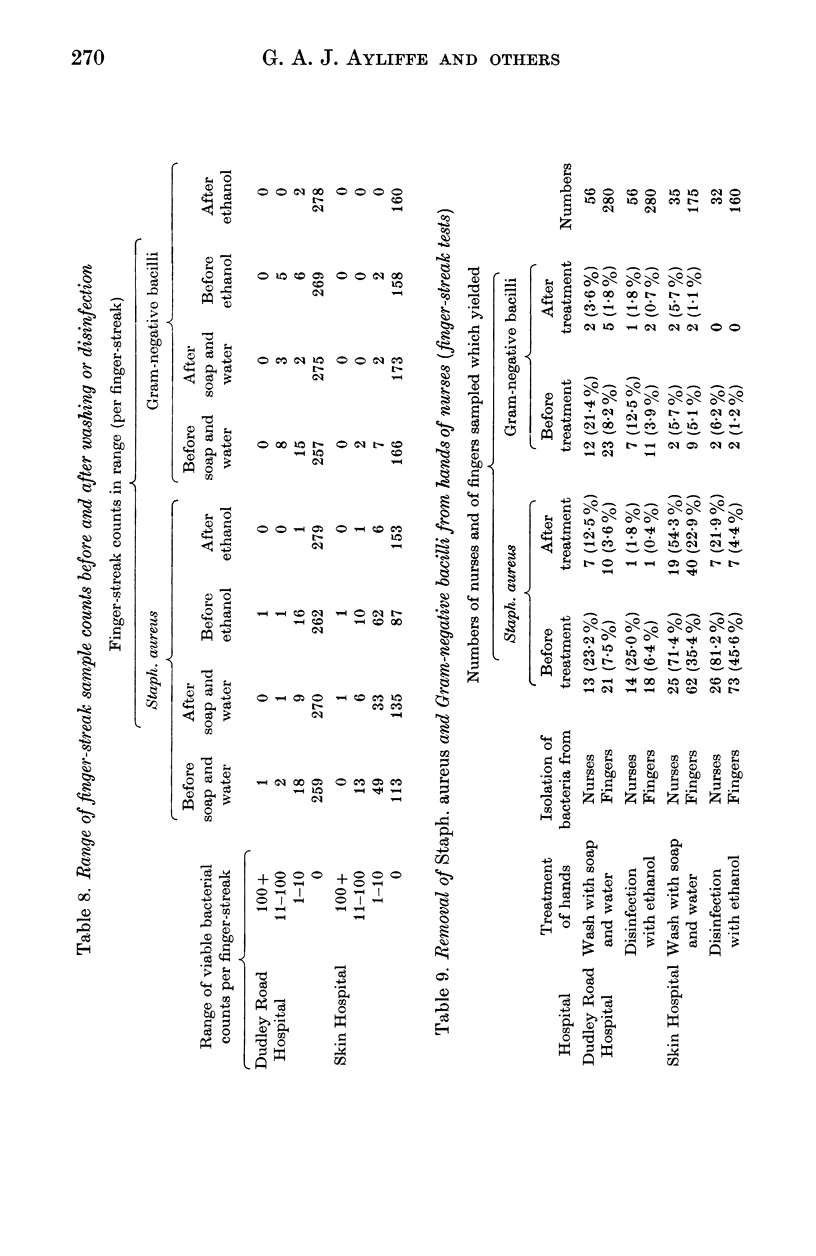
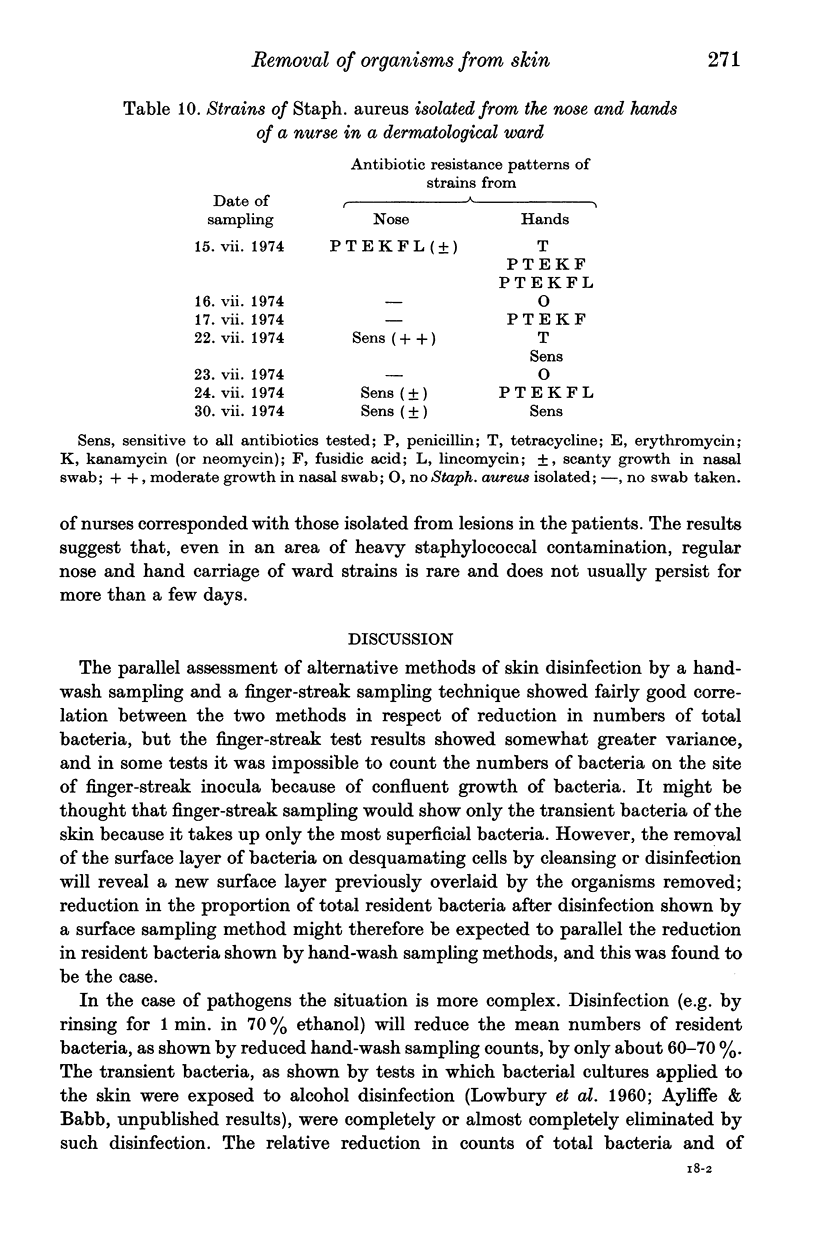
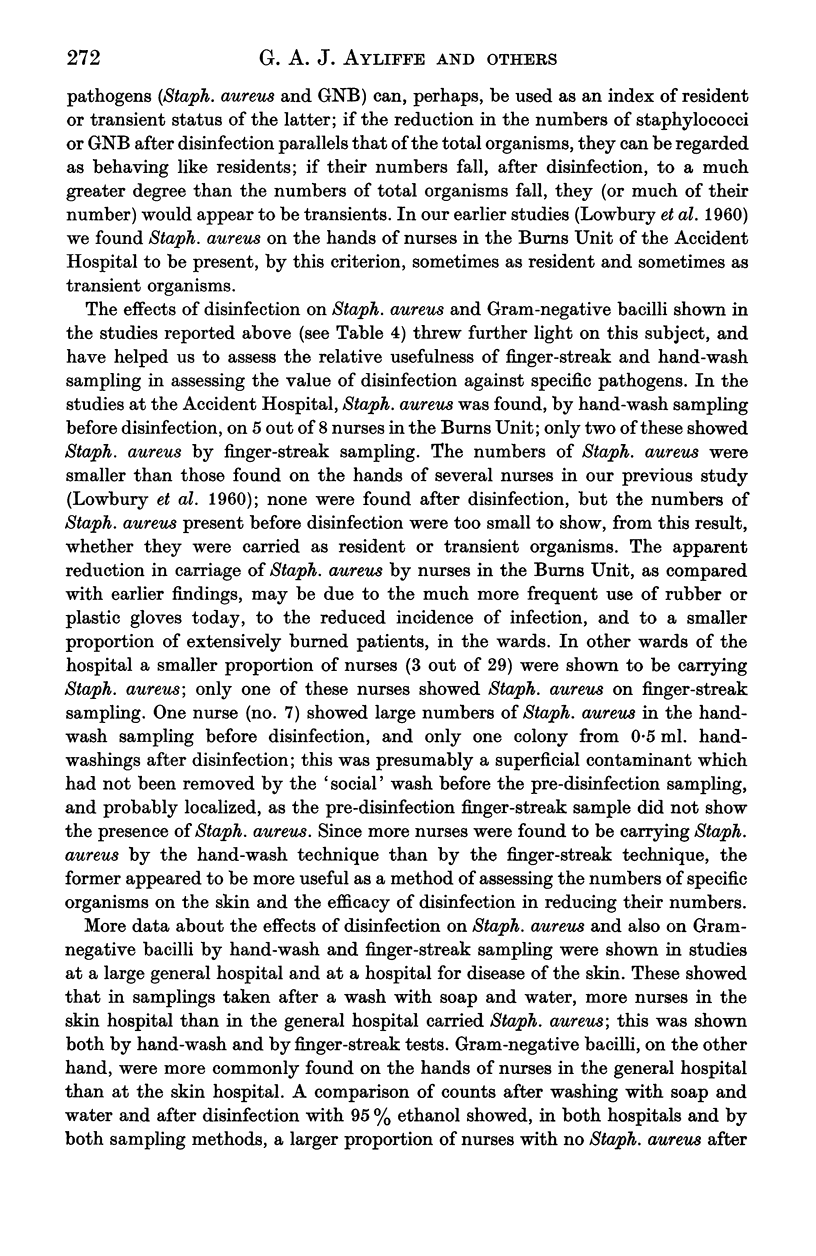
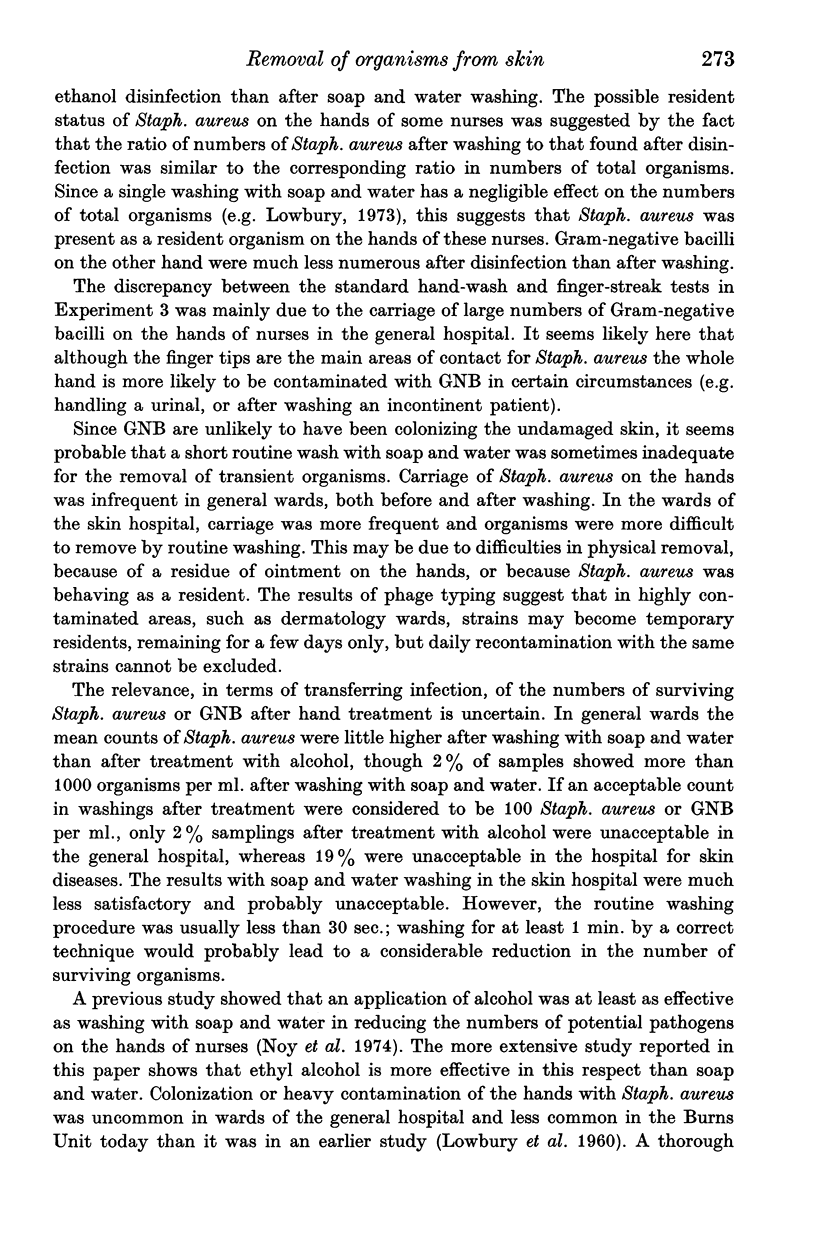
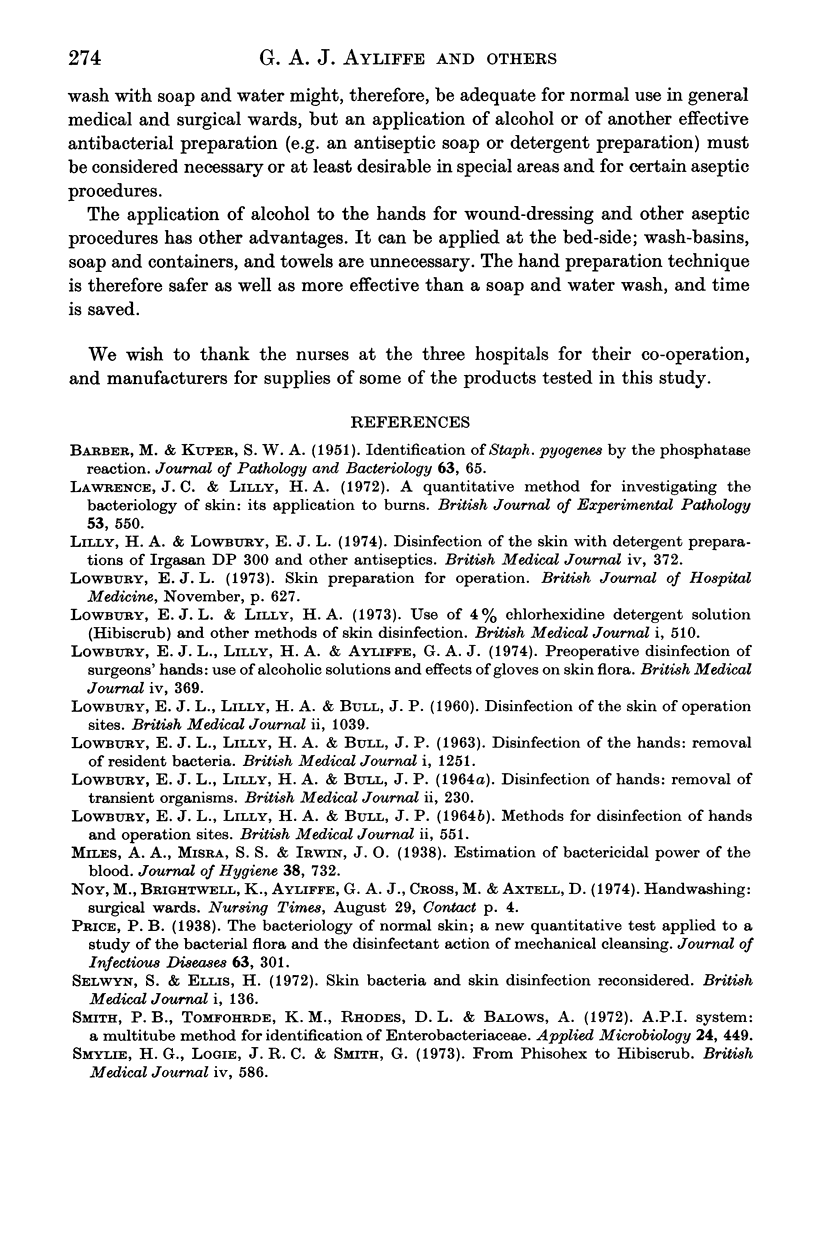
Selected References
These references are in PubMed. This may not be the complete list of references from this article.
- BARBER M., KUPER S. W. A. Identification of Staphylococcus pyogenes by the phosphatase reaction. J Pathol Bacteriol. 1951 Jan;63(1):65–68. doi: 10.1002/path.1700630108. [DOI] [PubMed] [Google Scholar]
- LOWBURY E. J., LILLY H. A., BULL J. P. DISINFECTION OF HANDS: REMOVAL OF TRANSIENT ORGANISMS. Br Med J. 1964 Jul 25;2(5403):230–233. doi: 10.1136/bmj.2.5403.230. [DOI] [PMC free article] [PubMed] [Google Scholar]
- LOWBURY E. J., LILLY H. A., BULL J. P. Disinfection of the skin of operation sites. Br Med J. 1960 Oct 8;2(5205):1039–1044. doi: 10.1136/bmj.2.5205.1039. [DOI] [PMC free article] [PubMed] [Google Scholar]
- Lawrence J. C., Lilly H. A. A quantitative method for investigating the bacteriology of skin: its application to burns. Br J Exp Pathol. 1972 Oct;53(5):550–559. [PMC free article] [PubMed] [Google Scholar]
- Lilly H. A., Lowbury E. J. Disinfection of the skin with detergent preparations of Irgasan DP 300 and other antiseptics. Br Med J. 1974 Nov 16;4(5941):372–374. doi: 10.1136/bmj.4.5941.372. [DOI] [PMC free article] [PubMed] [Google Scholar]
- Lowbury E. J., Lilly H. A., Ayliffe G. A. Preoperative disinfection of surgeons' hands: use of alcoholic solutions and effects of gloves on skin flora. Br Med J. 1974 Nov 16;4(5941):369–372. doi: 10.1136/bmj.4.5941.369. [DOI] [PMC free article] [PubMed] [Google Scholar]
- Lowbury E. J., Lilly H. A., Bull J. P. Disinfection of Hands: Removal of Resident Bacteria. Br Med J. 1963 May 11;1(5340):1251–1256. doi: 10.1136/bmj.1.5340.1251. [DOI] [PMC free article] [PubMed] [Google Scholar]
- Lowbury E. J., Lilly H. A. Use of 4 per cent chlorhexidine detergent solution (Hibiscrub) and other methods of skin disinfection. Br Med J. 1973 Mar 3;1(5852):510–515. doi: 10.1136/bmj.1.5852.510. [DOI] [PMC free article] [PubMed] [Google Scholar]
- Selwyn S., Ellis H. Skin bacteria and skin disinfection reconsidered. Br Med J. 1972 Jan 15;1(5793):136–140. doi: 10.1136/bmj.1.5793.136. [DOI] [PMC free article] [PubMed] [Google Scholar]
- Smith P. B., Tomfohrde K. M., Rhoden D. L., Balows A. API system: a multitube micromethod for identification of Enterobacteriaceae. Appl Microbiol. 1972 Sep;24(3):449–452. doi: 10.1128/am.24.3.449-452.1972. [DOI] [PMC free article] [PubMed] [Google Scholar]
- Smylie H. G., Logie J. R., Smith G. From Phisohex to Hibiscrub. Br Med J. 1973 Dec 8;4(5892):586–589. doi: 10.1136/bmj.4.5892.586. [DOI] [PMC free article] [PubMed] [Google Scholar]


